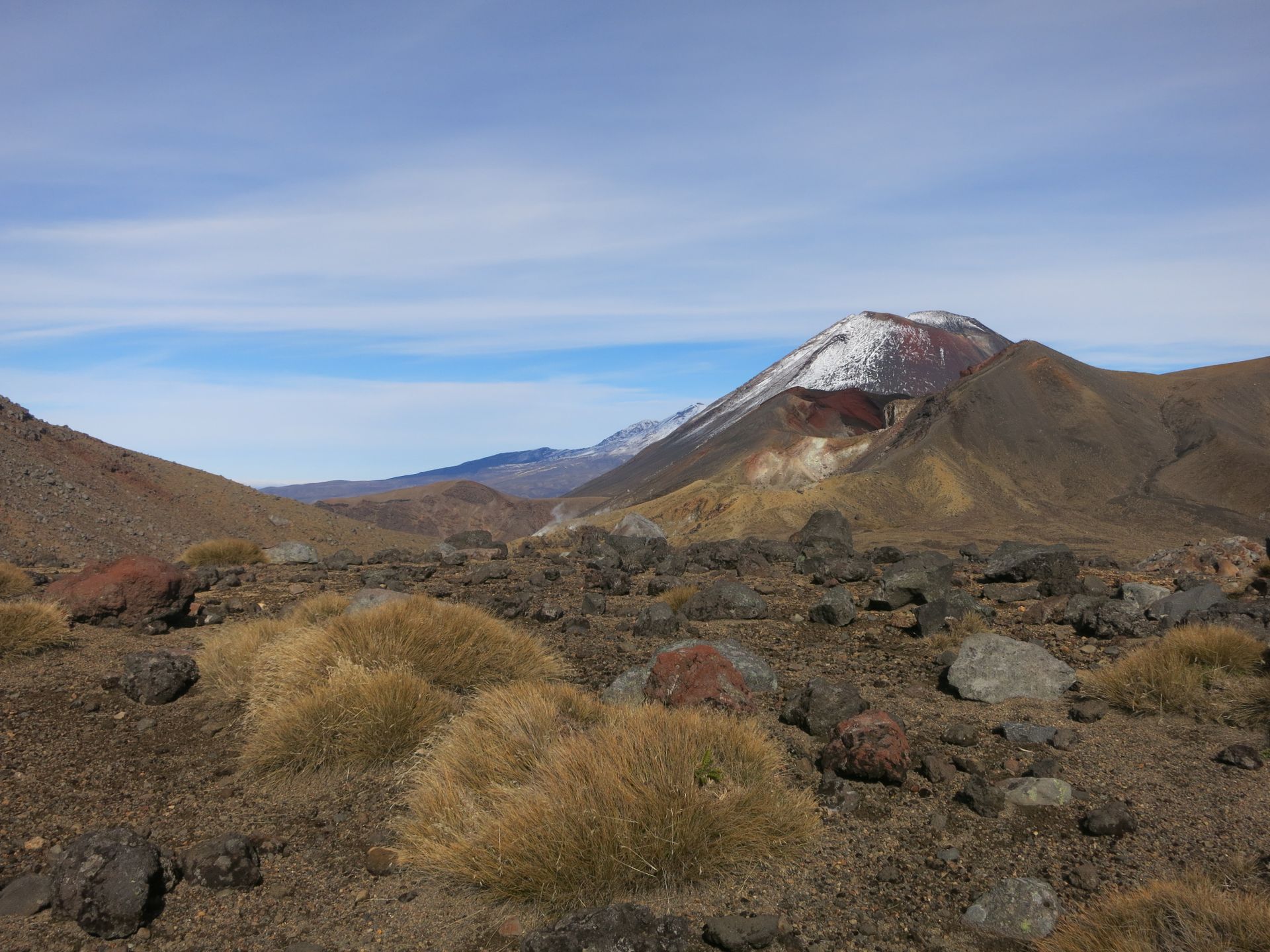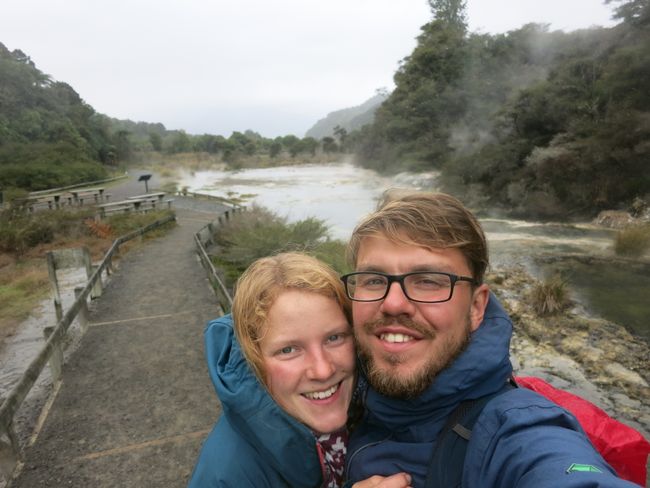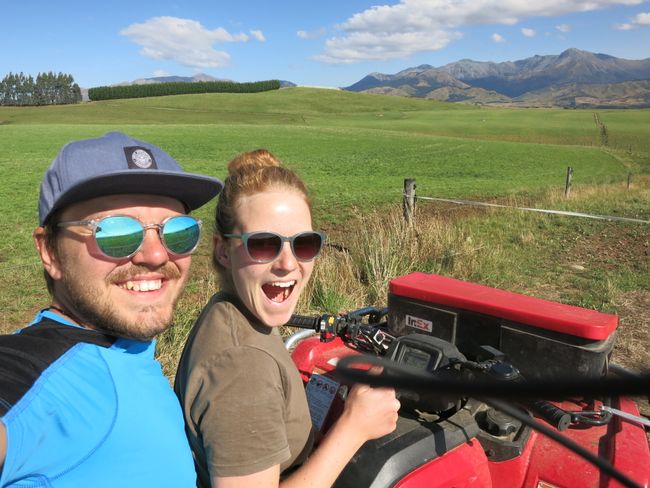The Fjordland
Közzétett: 12.05.2019
Feliratkozás a hírlevélre
For over a month, we traveled with our Odhi through the southern part of the South Island and daily expanded our camping skills and learned about the beautiful sides as well as the limitations of this absolute freedom. So it happens that you don't shower for 10 days or barely leave the car for three days due to the weather. These words should not convey the wrong impression, because the four weeks were characterized by lots of laughter, breathtaking landscapes, and endless romance. Nevertheless, after four weeks, the desire arose to participate in civilization again. Electricity, running water, and a real bed *Sigh*
Off to the next library and look for a new Wwoofing host... and behold, we ended up in the beautiful Fjordland near the town of Te Anau. This is a small, beautiful tourist destination on the second largest lake in New Zealand. The nature in Fjordland is extremely charming and despite the record rainfall, we were lucky with the weather.

The couple welcomed us warmly and immediately we had the feeling that this could be an instructive Kiwi experience. We immediately started chatting and it wasn't just Tim who claimed the lion's share. We were impressed to hear how incredibly 'busy' the two of them were. In addition to their own saffron business, including planning, cultivation, and marketing, they managed the leased farm and all its animals. Even though there weren't as many different animals as before, over 100 cows had to be moved and cared for every day. The main income came from being a so-called fencer, building fences for property boundaries. These jobs can be really 'off grid', somewhere in the middle of nowhere. For example, 20 kilometers of fence on over 1000 meters in a hilly landscape. And if that wasn't enough, they were also dedicated to beekeeping and had 75 hives. To our delight, this allowed us to gain insight into many different activities. Since the saffron harvest takes place later in the year, we only prepared some sections of the fields for harvest and had some informative conversations about the noble spice. Working with the bees was particularly fun for us. We had even talked about working with bees before. Since experience is very important for this activity, we couldn't help much on the first day. We mostly stood at the edge, protected by beekeeper overalls, and observed the sometimes wild behavior.
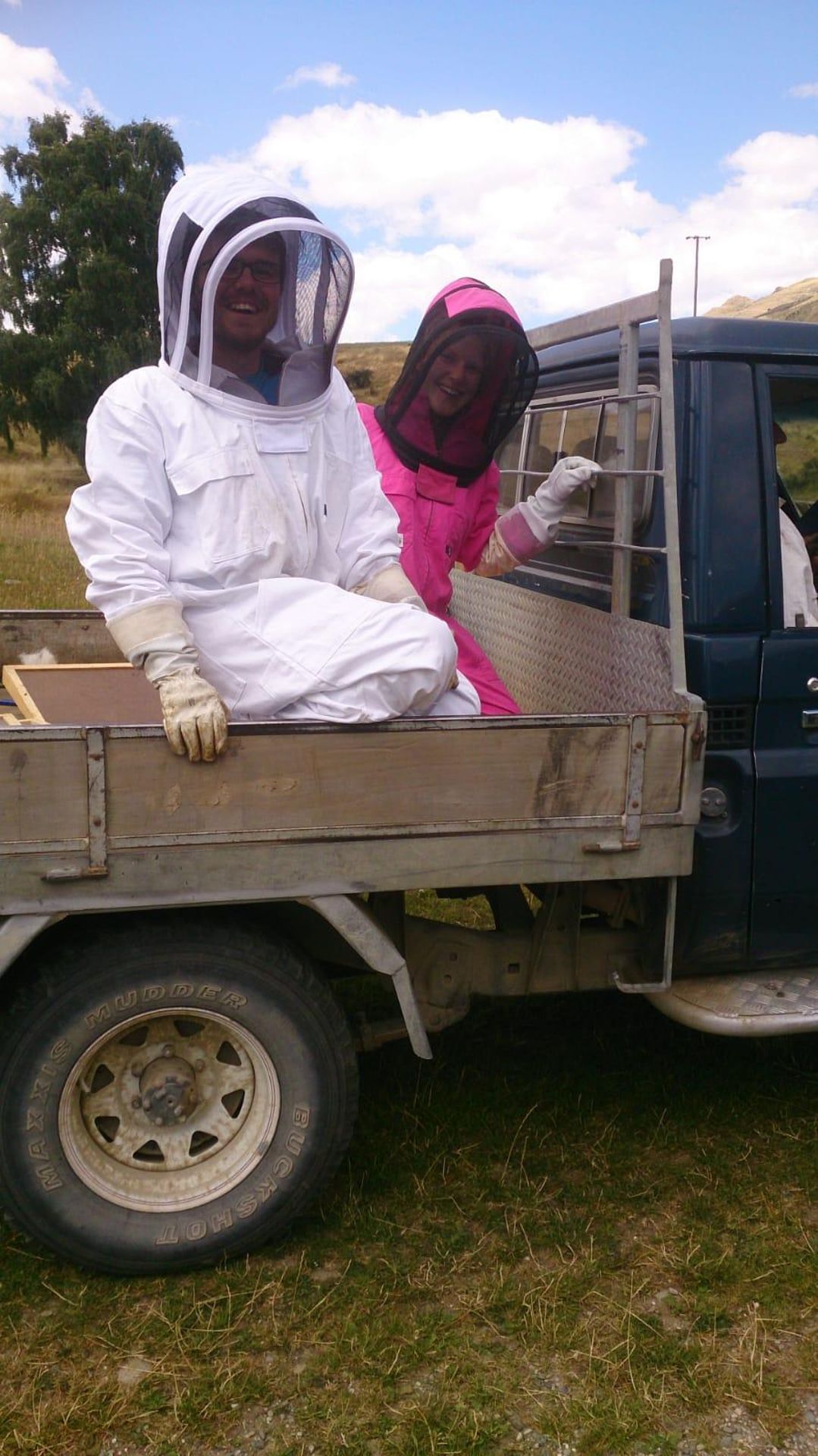
Together with a friend of the man, the beehives were opened and examined for possible diseases. The goal was to separate larger hives and introduce a new queen in order to ultimately turn one into two hives. However, you had to find the existing queen first. Compared to the normal bees, the queen is clearly recognizable. Finding her among several thousand requires experience, patience, and very good eyes. For us, it was more like finding a needle in a haystack. After a few minutes, we got closer, Caro was initially more curious. We were told what was happening and had the opportunity to search for some queen bees ourselves. We were allowed to hold and move so-called 'frames'. Caro was suddenly aware of how heavy such an individual frame filled with honey really is. Easily up to 4 kg. The longer we stayed near the open beehive, the more restless they became. Suddenly, the entire overall was covered with bees. The buzzing around us became louder and we could clearly perceive how the bees changed their mood to 'not amused'. Suddenly, we felt very small in our suits and hoped that everything was securely closed. Nevertheless, we couldn't avoid a few stings during these days. At the end of the day, the time had finally come to taste the sweet gold. However, there was still a small hurdle to overcome. Because to taste it, you had to take off your gloves, open your helmet, and reach into a honeycomb despite the bees. While Caro hesitated, Tim bravely stepped forward. At least the glove was quickly removed, but opening the helmet took real courage. We had never tasted anything like this slightly tempered, super liquid, creamy, and long-lasting sugar shock before. It was really hard to stop, but a few envious bees convinced Tim, at least, to put his helmet back on. In the evening, Caro summed up that unlike an ordinary workday, this was a day full of new experiences that will stay with her forever. (Looks like someone got a little bit bee-crazy :)) The honey-nibbling didn't end in the next few days either, as a broken window was kept in the kitchen... obviously not a safe place!
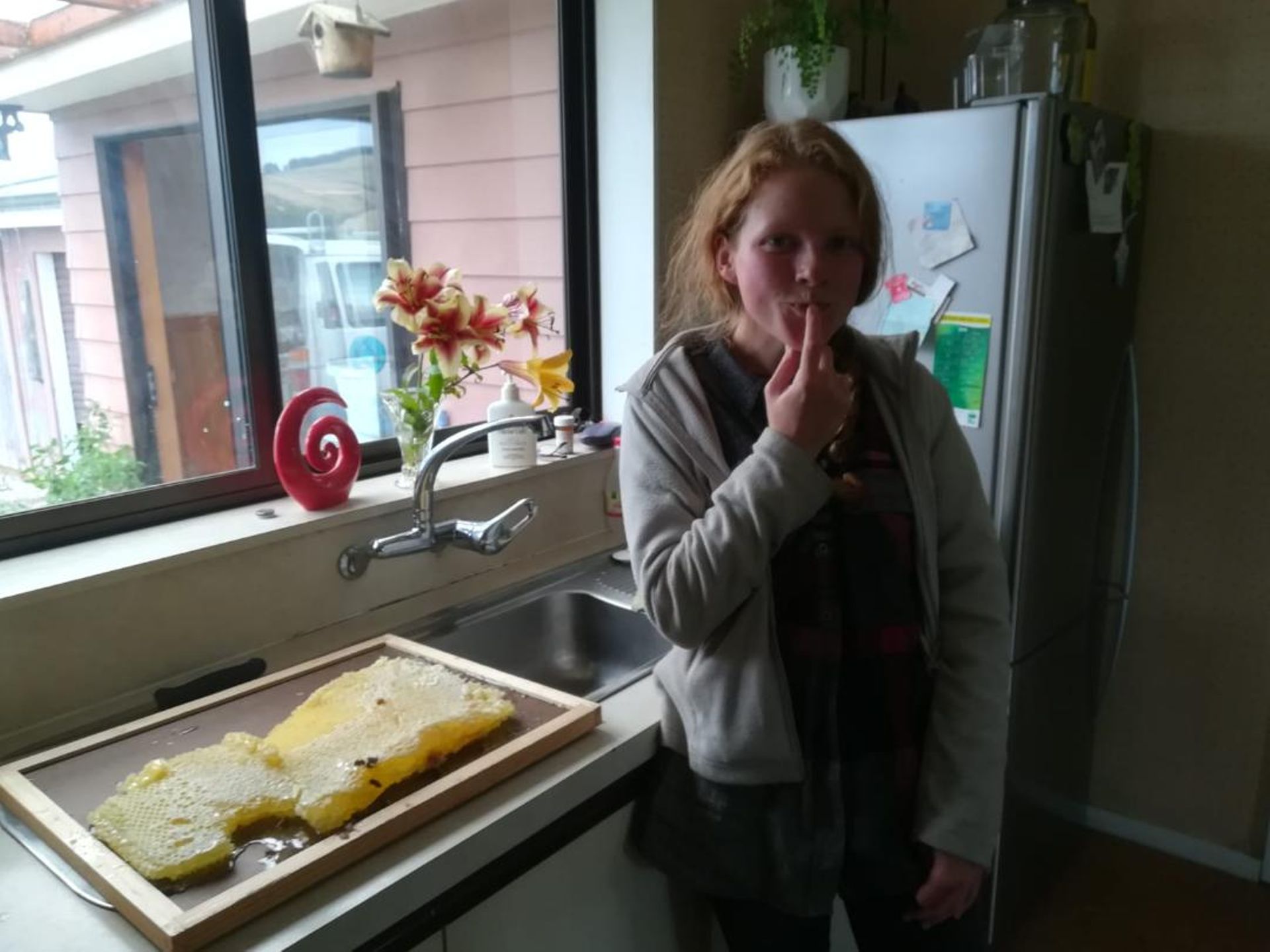
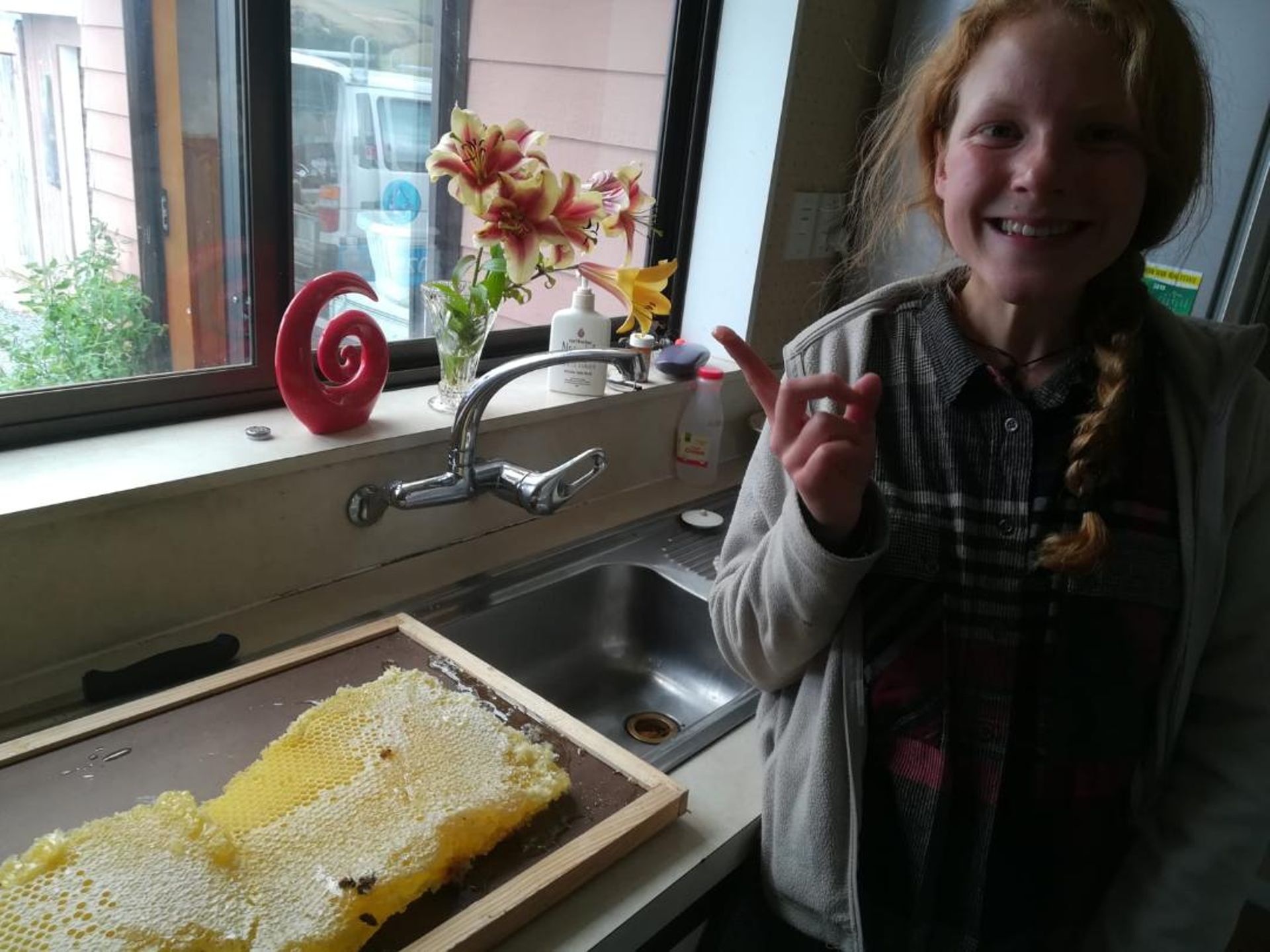
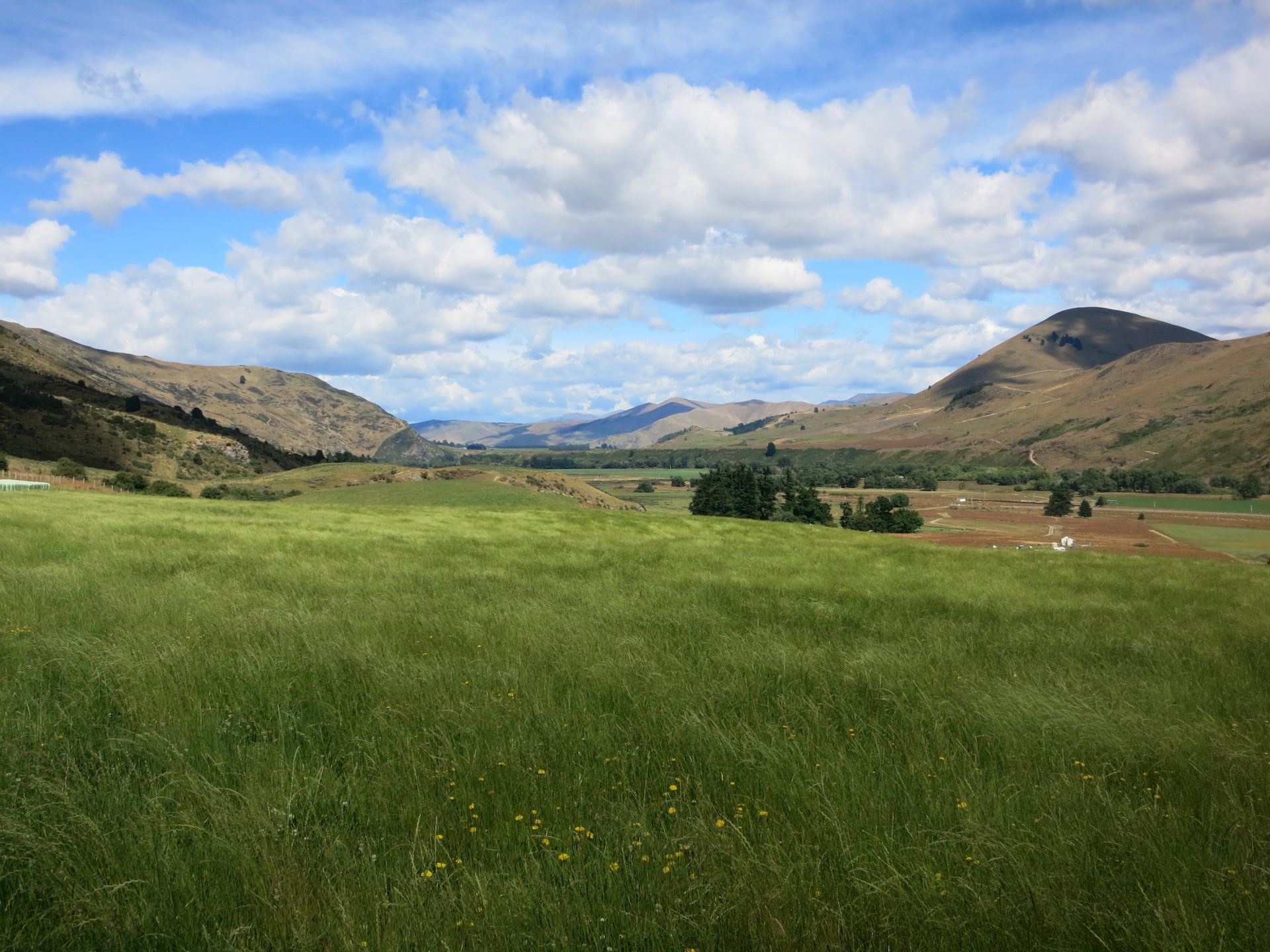
A few days later, we visited other hives that already had a young queen and harvested numerous honey-filled frames. Now everything, together with the honey we had already saved, had to be brought for further processing. So we moved nearly 50 boxes, each filled with up to ten frames, from the storage to the truck and from the truck to the company. Each box weighed about 40 kg, which had to be moved twice. Tim quickly lost his initial smile. With each trip, the boxes felt a bit heavier. Tim hadn't been so exhausted in a long time as he was that evening. Since the men shared the carrying of the boxes and it was too heavy for the women, the muscles made themselves felt after a ton of honey. Still, an incredible experience, the job of a beekeeper is really tough!
And now to the really hard task, 'fencing'. We accompanied the man to his workplace, which can easily be more than 100 kilometers away. We have to admit, such a wonderful workplace with fresh air, a view into the distance, and simply no annoying colleagues in the area... fantastic. But now to the work where we quickly reached our physical and mental limits. For the new fence, the wooden posts (some weighing up to 100 kg) were already set in the ground. Now it was time to secure the wires. This should work quite easily with special U-shaped nails and a hammer, or at least it seemed easy when he did it. Tap, tap, tap, six wires were attached to the post. Armed with a hammer and nails, we started enthusiastically, but that quickly changed. Those stubborn nails just didn't want to go into the posts, and when they did, they were crooked, so they had to be pulled out again. As simple as this work seemed at first, 40 years of experience are noticeable with every hammer blow.

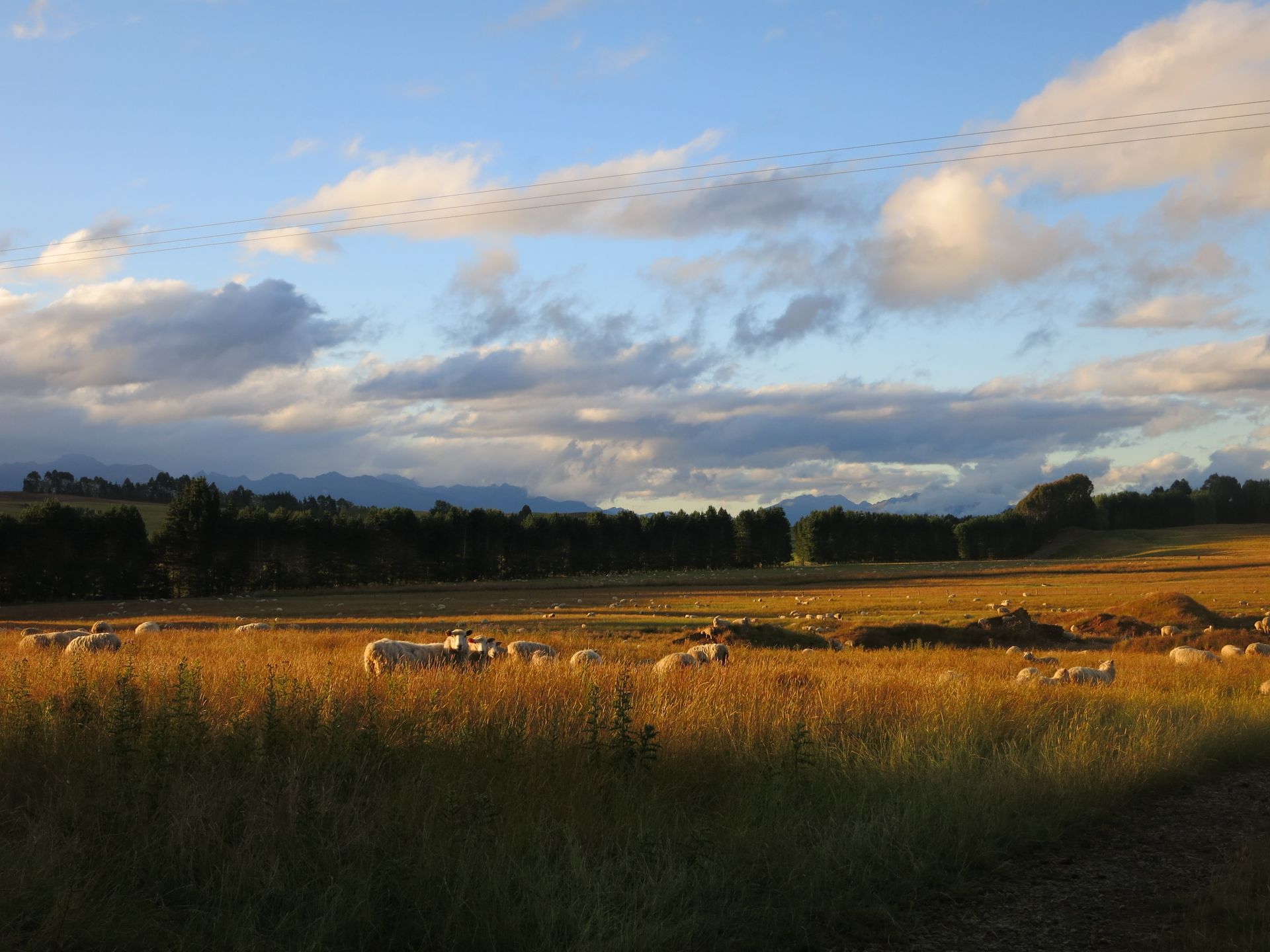
Tim also had the opportunity to go fishing again, which was a great success. The big rainbow trout bit after just a few minutes. A second one followed directly. The big one was over 50 cm long and weighed more than two kilos. As you can see, we had enough fish for the next few days, haha. Our Wwoofing host was also very enthusiastic, and the smoker was immediately turned on. The gutted fish were only rubbed with cane sugar and cooked in the smoker with manuka wood for 20 minutes. Mhhhh, a real feast!!!
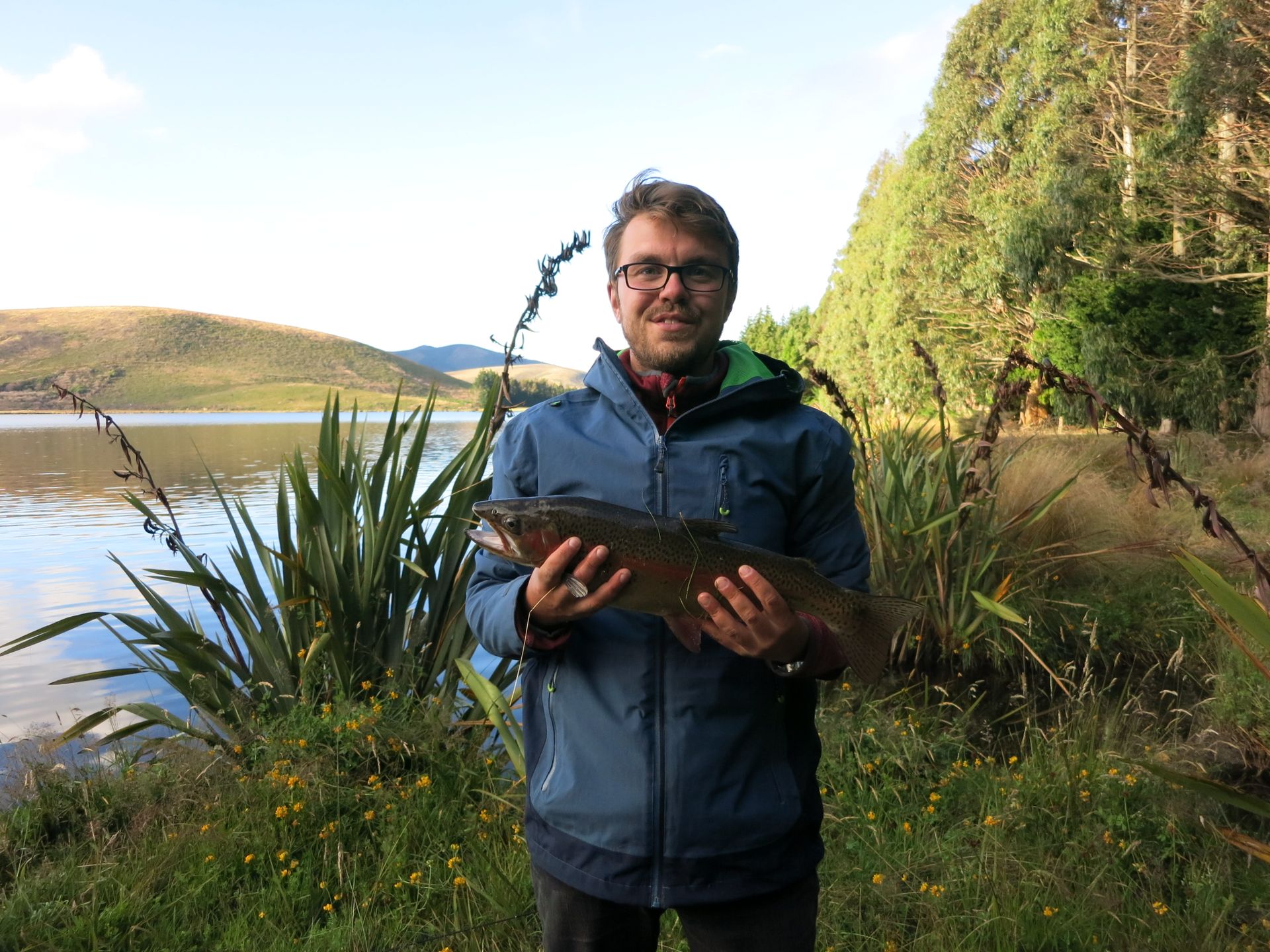
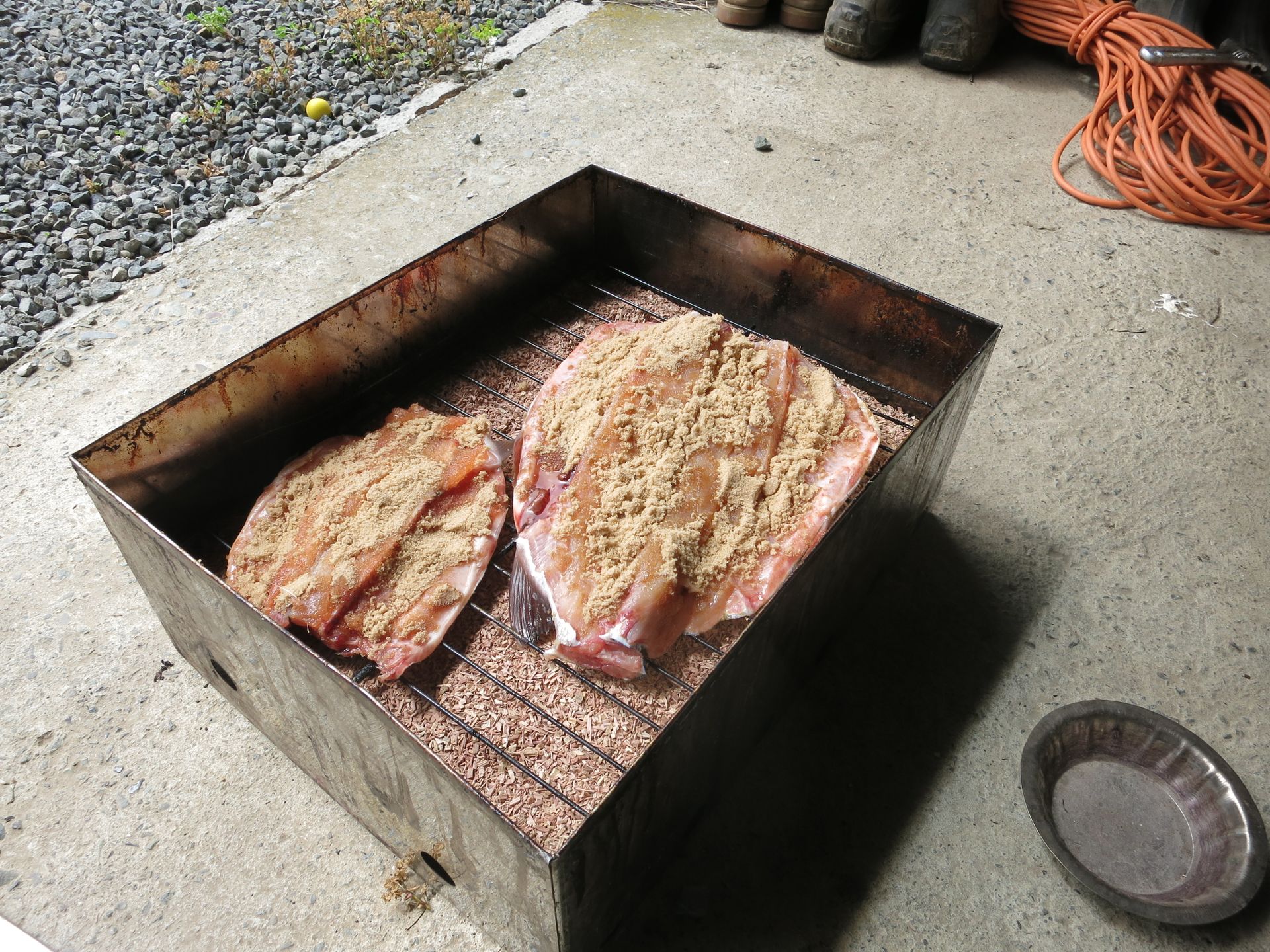
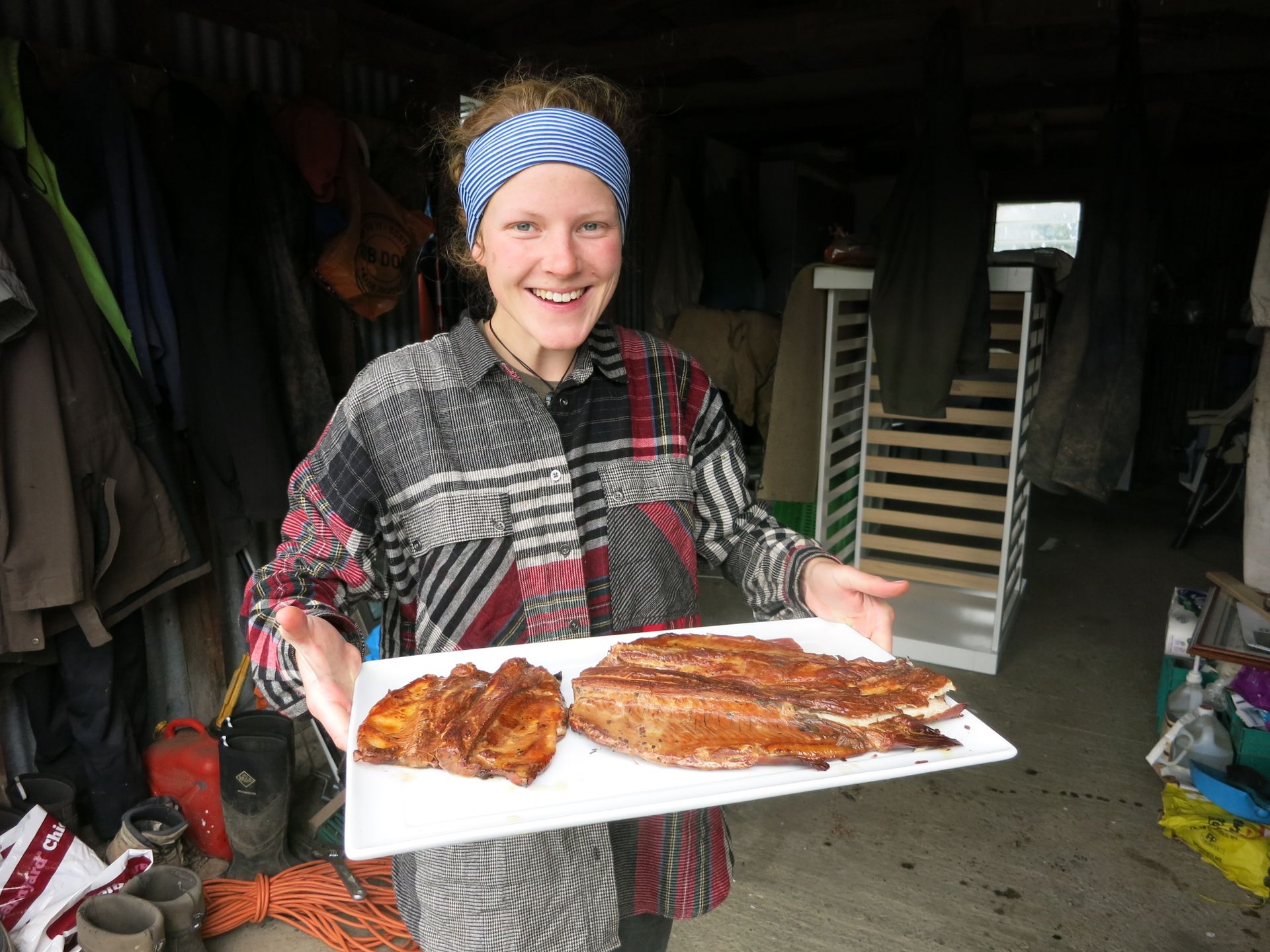
Another highlight of our stay in Fjordland was the visit to the famous Milford Sound. On our day off, we set off. We had almost two hours ahead of us and only one narrow, winding, partially poorly constructed road led to this fjord. Fortunately, our old Odhi managed this exhausting drive, and shortly before reaching our destination, we widened our eyes once again. In front of us, a tunnel, but not like the ones we are used to in Europe... dark, one lane, wet (have you ever had to use a windshield wiper in a tunnel?), so narrow that we were afraid of touching the walls, and really steep. We wondered how all the tour buses would fit through, because in addition to all the self-driving tourists, almost 200 tour buses travel there every day. We chose the earliest possible time for a boat tour, thus avoiding the biggest rush and also saving 30 percent of the tour cost, how convenient everyone is. On the ship, it became clear why so many people made the trip. Impressed by the breathtaking views of the nature with endless cliffs, countless waterfalls, lazy seals, and an underwater observation center, we enjoyed the day. We were particularly grateful that we didn't experience the annual average rainfall of 7000 mm. As a comparison: the average rainfall in Germany in 2018 was 590 mm.
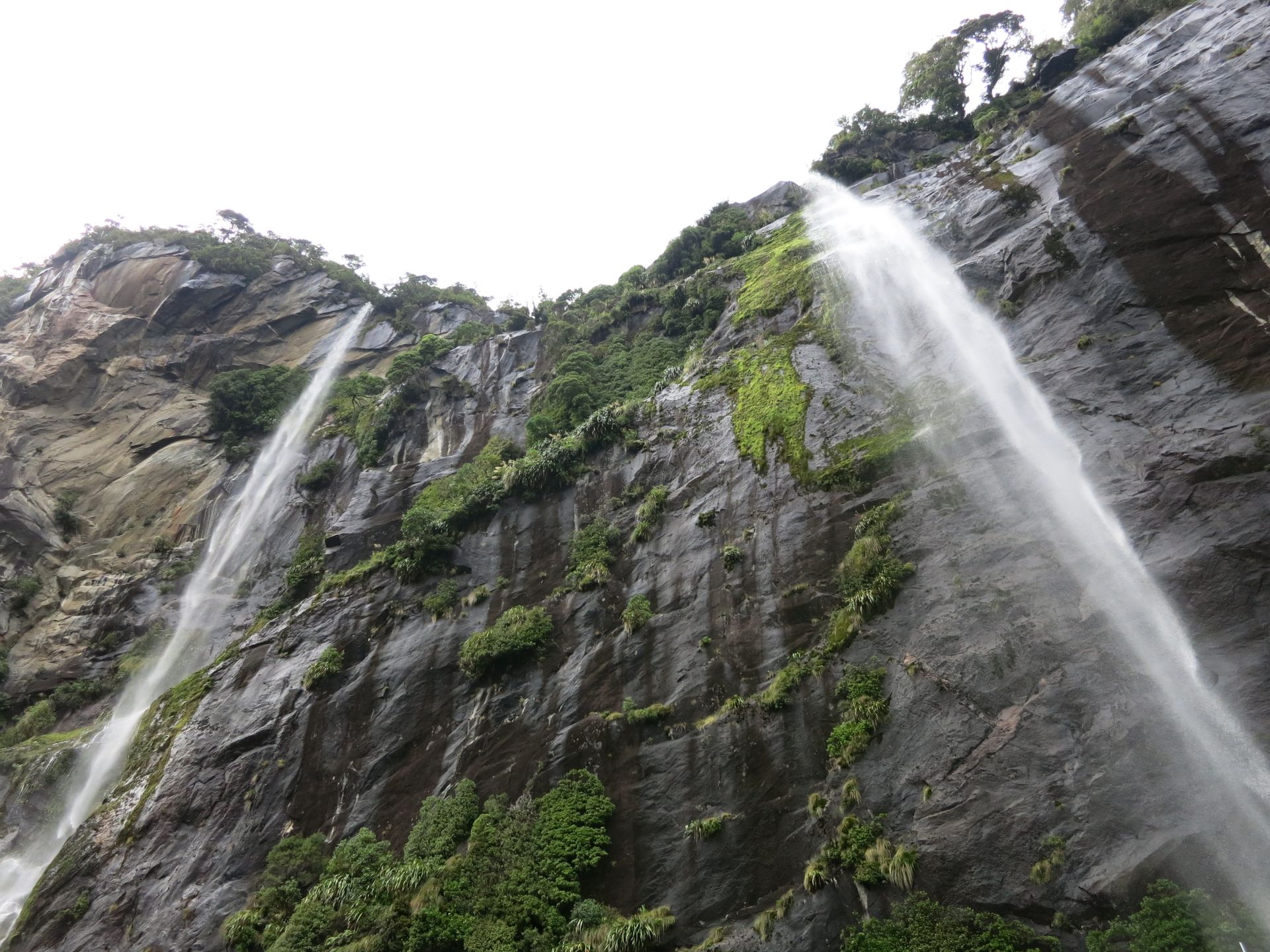
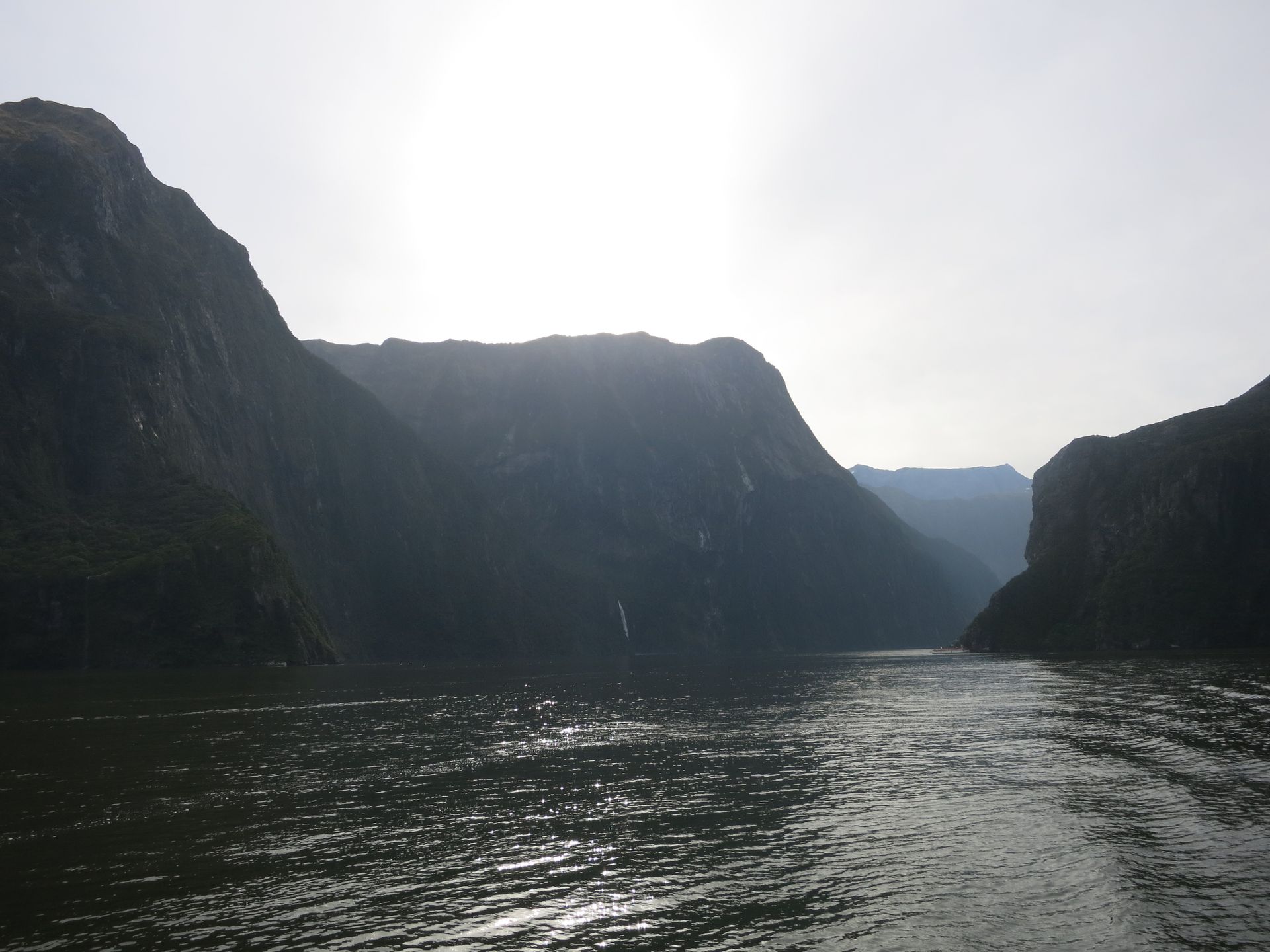
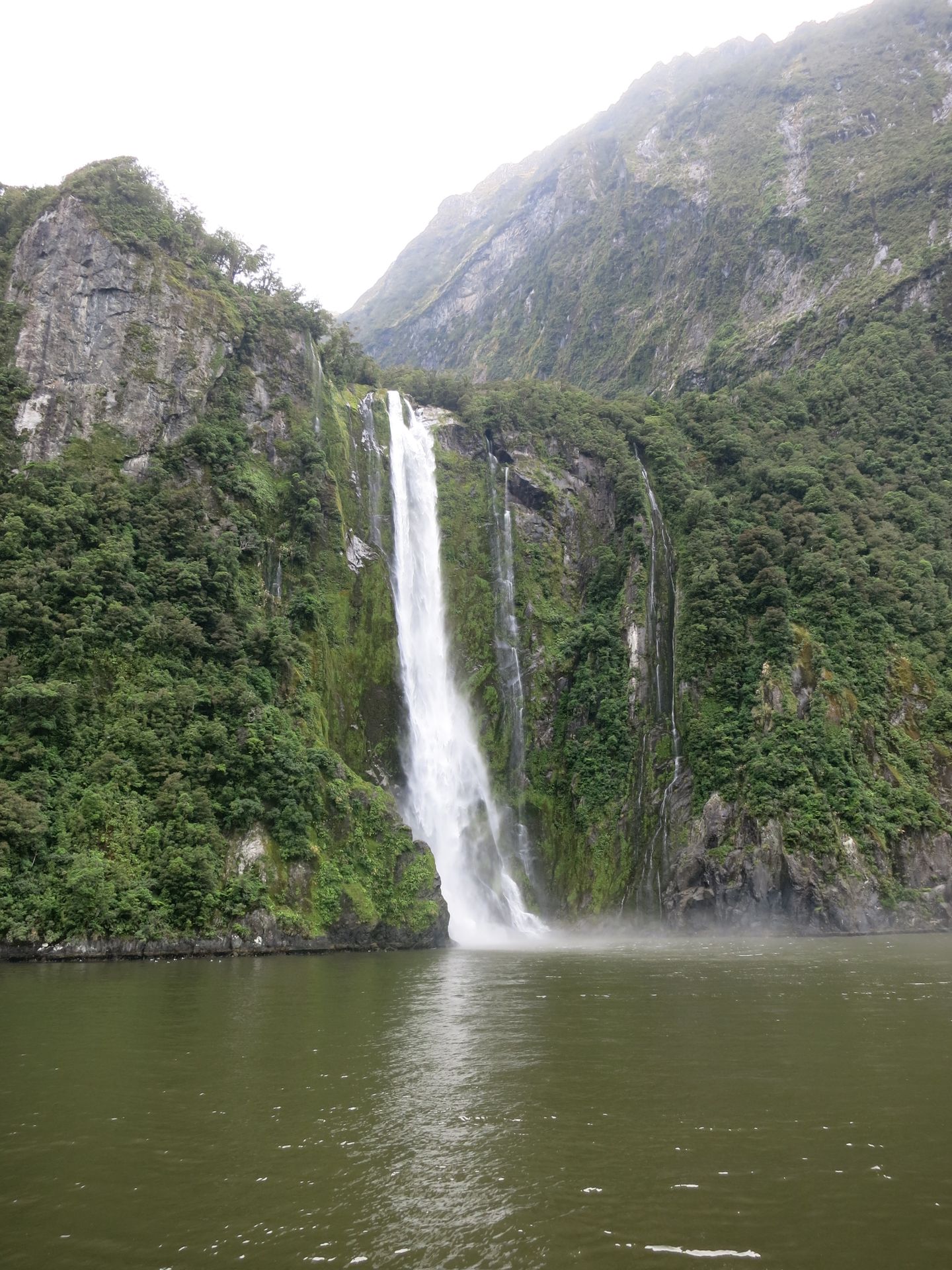
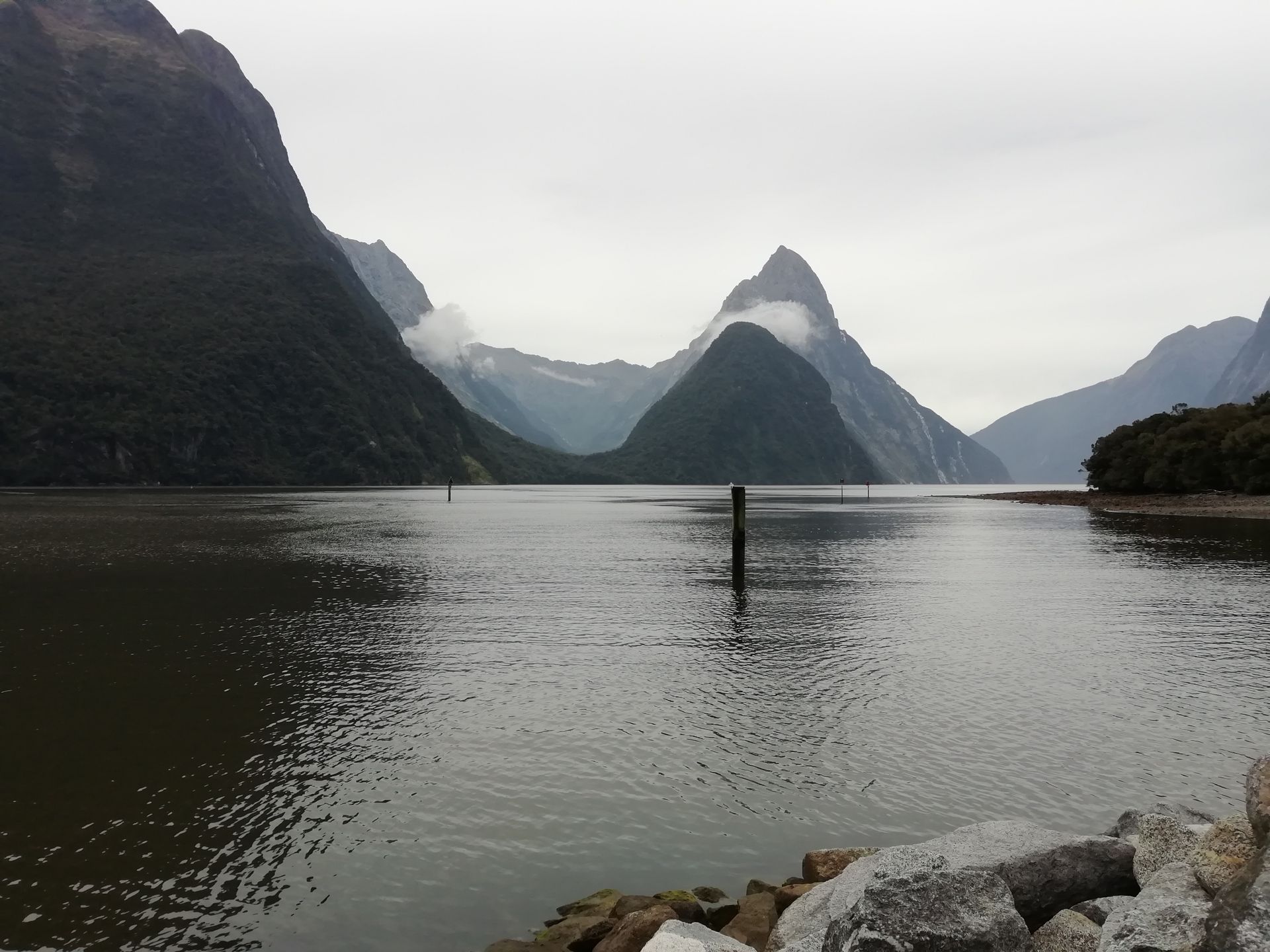
Feliratkozás a hírlevélre
Válasz

Új Zéland utazási jelentések
